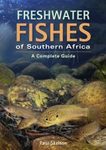About this book
The following 24 species of scorpionfishes are recognized in the Indo-Pacific genus Scorpaenopsis Heckel, 8 of which are described as new: S. altirostris Gilbert, known from 6 small specimens (largest 24.5 mm SL) trawled off Molokai, Hawaiian lslands in 79-134 m, unusual in its large eye (3.3-3.5 in head); S. barbata (Ruppell) from the seas of the Arabian Peninsula south to Somalia, unique in having one or more ridges between opercular spines; S. brevifrons Eschmeyer and Randall, with a short snout and usually 19 pectoral rays, known only from the Hawaiian lslands; S. cacopsis Jenkins, also a Hawaiian endemic, the largest species of the genus (to 387 mm SL), with 5 suborbital spines; S. cirrosa (Thunberg) from Japan, Taiwan, and China south to Hong Kong, often confused with other large, long-snout species such as oxycephala, differing in its long penultimate dorsal spine (1.4-1.7 in last spine) and only about one-fourth of its eye protruding above the dorsal profile of the head; S. cotticeps Fowler, a small species (to 63 mm SL) from the western Pacific and western lndian Ocean, with 33-37 scales in longitudinal series and the interorbital ridges joining tips of tympanic spines; S. diabolus (Cuvier), wide-ranging and common in the Indo-Pacific, the largest of the humpback species (to 234 mm SL), and the only one with a strong modal count of 18 pectoral rays; S. furneauxi Whitley from northeast Queensland and the Arafura Sea, usually taken in trawls, distinct in its high dorsal fin (longest spine 1.9-2.2 in head) and lack of a median interorbital ridge; S. gibbosa (Bloch and Schneider) from the western Indian Ocean, often confused with S. diabolus, differing in usually having 17 instead of 18 pectoral rays and smaller size (to 110 mm SL); S. gilchristi Smith, known from 2 small Natal specimens from 26-50 m, readily distinguished by having 16 pectoral rays and the suborbital ridge directly under the eye; S. lactomaculata (Herre) from southern Oman to Bombay, including the Gulf of Oman and one record from the Persian Gulf, unique in the combination of modally 18 pectoral rays and 61-65 scales in longitudinal series; S. longispina, n. sp., presently known only from Mauritius and Natal, usually with 17 pectoral rays, 49-53 scales in longitudinal series, a shallow occipital pit, long second anal spine, and small size (to 93 mm SL); S. macrochir Ogilby, a "humpback" species like diabolus, from the western Pacific east to French Polynesia (with one western Indian Ocean record from Mauritius), differing from gibbosa in lacking a black spot on the inner surface of the pectoral fins; S. neglecta Heckel from the western Pacific to India, similar to gibbosa, differing in having a serrate supraorbital ridge and divided spines on the head; S. obtusa, n .sp., described from 3 specimens from the Philippines and Trobriand Islands, also a humpback species, distinct with a very short snout and 37-39 scales in longitudinal series, S. orientalis, n. sp., from southern Japan, previously misidentified S. oxycephala, differing in usually having 18 pectoral rays (modally 20 in oxycephala), 54-60 scales in longitudinal series (59-67 in oxycephala, and a deep V-shaped interorbital space with about half the eye above the dorsal profile of the head; S. oxycephala Bleeker, a large, long-snouted species (to 340 mm SL) from the western Pacific to East Africa and the Red Sea; P. papuensis (Cuvier), from the Society Islands to the western Pacific and Western Australia, also similar to oxycephala, differing in having 48-55 scales in longitudinal series and the space between opercular spines scaled; S. pluralis, n. sp., described from one specimen, 74 mm SL, taken by trawl in 110 m from Laysan, Hawaiian Islands, distinctive in its opercular spines divided into 2-4 spinous points; S. possi, n. sp., common and wide-ranging in the Indo-Pacific, unique in having an extra spine anterior to each tympanic spine, nearly always 17 pectoral rays, and moderately large size (to 194 mm SL); S. pusilla, n. sp., described from 2 mature specimens, 27.3-31.6 mm SL. from the Marquesas, similar to cotticeps, differing in having 43 scales in longitudinal series; S. ramaraoi, n. sp., western Pacific to Sri Lanka and Pakistan, distinct in having 18 pectoral rays and a strong ridge above the first lacrimal spine, usually ending in a sharp point; S. venosa (Cuvier) from the western Pacific to India and Natal, to 175 mm SL, with a deep occipital pit, its anterior edge straight; and S. vittapinna, n. sp., from East Africa and the Red Sea to the Caroline Islands and Samoa, previously identified as brevifrons but with modally 18 instead of 19 pectoral rays and a broad dark band across the anal and pelvic fin.
Customer Reviews







































